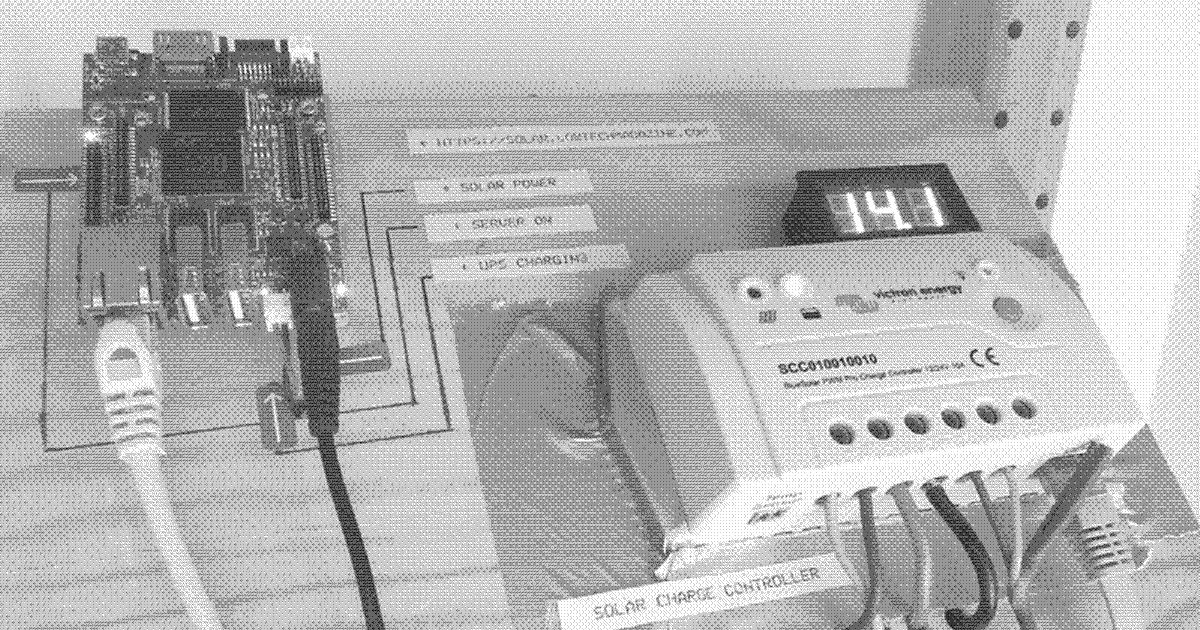
Whether you’ll be able to visit this interesting website will depend on how sunny it’s been in recent days.
Low Tech Magazine is tech site with a few differences to most others in this category. One is that it refuses to assume every problem has a high-tech solution.
“Interesting possibilities arise when you combine old technology with new knowledge and new materials, or when you apply old concepts and traditional knowledge to modern technology.”
Low Tech Magazine also has a version of its site that combines modern technology with an old-fashioned thrift approach. It’s entirely powered by the sun and when you visit, you’re greeted with the following message:
“This website runs on a solar powered server located in Barcelona, and will go off-line during longer periods of bad weather.”
Low Tech’s Solar Power Setup
There’s no field of solar panel arrays and shipping containers with batteries involved to provide the clean power to keep the site running.
Since early January last year, the website has been running on a single 30 watt solar panel installed on the balcony of the author’s home and a 168 watt-hour lead-acid battery. From September 2018 to January 2020, a 50W solar panel and an (old) 86 Wh battery were used.
The server manages to run on just 1 to 2.5 watts of power using a “mini-computer” (Olimex Olinuxino A20 Lime 2) that has the processing capabilities of a mobile phone. Another important aspect is the site is very basic in terms of design. It’s a static site rather than database-driven as most are these days, uses “dithered” images and various other approaches to reduce energy use.
Uptime Performance
At the time of writing, the site had seen 4 days, 10 hours, 38 minutes of uptime. It’s winter in Spain at the moment, with sunrise around 8.17am and sunset at 5.30pm local time.
As for uptime over a longer period, between 12 December 2018 to 28 November 2019 the server was up for 95.26% of the time. That sounds pretty impressive – and it is given the setup – but it means it was offline for the equivalent of 16.64 days over that period. This would be pretty awful for a standard commercial website.
Maybe I’m just getting old, but when visiting Low Tech Magazine’s solar powered web site after having been assaulted by all manner of multimedia and whizz-bang features on other sites (including this one), it’s kind of refreshing.
Take a look and see what you think; but perhaps pick a time when it’s sunny in Barcelona.
How Much Energy Does The Internet Consume?
The SolarQuotes web site – and all others – are part of the World Wide Web, which is accessed via the internet.
Tens of billions of devices are connected to the internet – personal and work computers, tablets, mobile phones, home appliances, various other gadgets and even solar power systems. Most of the information received and sent by these devices goes through data centers. Global data center electricity use last year has been estimated at 200-250 terawatt-hours (TWh); or around 1% of global final electricity demand. This doesn’t include electricity consumed for the purposes of cryptocurrency mining, pegged at a staggering ~100 TWh.
Just as some sort of comparison, annual electricity consumption in Australia’s National Energy Market (NEM)1 for 2020-21 was 188.6 TWh.
Footnotes
- The term “National Energy Market” is a little misleading, as the NEM consists of Queensland, New South Wales, Victoria, South Australia and Tasmania. ↩

 RSS - Posts
RSS - Posts



Speak Your Mind